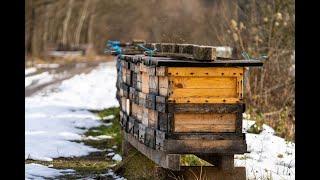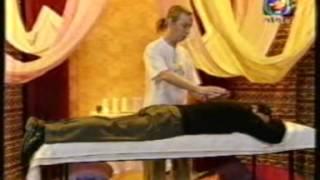
The Simplicity of Selection and Breeding of Honeybees in the Treatment-Free apiary with Terry Combs
Комментарии:

This was excellent! Thank you. I've been treatment-free for eight years now, and just hit 40 colonies in my apiary. Fingers crossed, we're through the bottleneck.
Ответить
Interesting talk. Sometimes in one year I might have a daughter queen from a mother that I got from the grandmother, but usually at least a mother and many daughters. Then in spring I can tally up who survived and if the mother and all her daughters survived I breed from them. I had one mother and 9 daughters all die ( my worst case) obviously no breeding stock there. It was rather unusual as it was a swarm I had caught the previous year and then the following year had a bad case of Asian hornets. It wiped out the entire line by next spring. Varroa stress and hornets a bit hard on them. But others were fine. I do treat with apilifevar a thymol based product and do brood breaks via nucs. But I look for uncapping behaviour in all my colonies. I do come across it but only started looking two years ago. So it is the beginning for me.Just think this might be a way to not have to stop treating till I see more uncapping taking place in more of my colonies.
Ответить
super mites
Ответить
VSH and uncapping infested cells are 2 genes in the DNA of all Apis Mellifara bees that can be selected for or added when identified, the Pol-line genetics are 25 years of selected breeding for mite resistance, Cory Stevens did it in a few years by isolating the genes and studying Dr. Harbo's work and papers. It can now be added to any Apis Mellifara bees. Problem is it can be deluted with time and generations of bees, unless you keep the genome stock line pure to add it back occasionally.
Ответить
Here's a tip from a Georgia beekeeper, if you want to make quick nuks for mating queens from. swarm cells, I had an old deep from the 70s that had a busted rail in the middle, I cut each side off and put 3/4" plywood on the open side, make bottom and top migratory style and your in business.
Ответить
I'm in middle Georgia, I have flow from frost to frost, I run 2 deep langs and let em grow, I pull capped frames of honey from the outsides of the top box, my 2 locally caught swarms produced around 200# of surplus honey each and still had about 100# of capped honey from the goldenrod flow, cotton fills in from spring/summer flows to fall flows, from these 2 colonies I also pulled enough brood to make 2 - 5 frame nuks.
Ответить
Best way to keep extra queens is in a 10 frame Lang with 2 division boards and pop a frame of swarm cells and food in each in as they show up, they'll share heat of each in winter, if done right you'll have 3 - 3 frame nuks in 1 deep box, covering them with 3 strips of Reflexit bubble wrap and a wrap of 1/2" Styrofoam board with thin aluminum on the outside painted black, the middle section entrance on the opposite end.
Ответить
Hello from Central New Hampshire. Thanks for posting this talk. I'm a 60 yr old 2nd winter Layens horizontal hive beekeeper. I started with a swarm trap catch in 2021. Caught another swarm this spring. I made splits this summer with queens from Lemonfair Apiaries in Vermont and 1 queen from Troy Hall Apiaries in New Hampshire. I will see who survives this winter and move forward with those bees. Great talk, thanks again. Stay warm, take care, Brice
Ответить

























